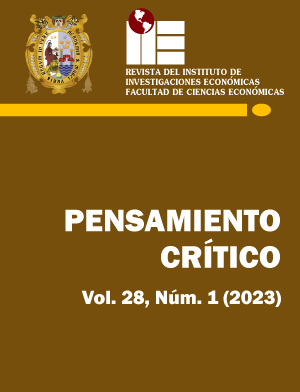Myth versus reality in the payment for hydrological ecosystem services: the case of Peru
DOI:
https://doi.org/10.15381/pc.v28i1.25713Keywords:
Environmental Policy, economic instruments, Payment for ecosystem servicesAbstract
Payment for Hydrological Ecosystem Services – PHES is presented as a market mechanism where two parts voluntarily agree, one, to recognize an ecosystem service provision and to pay for it, and the other one to receive this payment under the commitment to preserve the forest cover upstream, ensuring ecosystem services such as higher water availability and lower sediment content for the water users downstream. However, PHES application in Peru, firstly, does not warrant that the supposed benefits are really obtained, since no adequate monitoring has been carried out. And, secondly, the Peruvian experience clearly shows that PHES is not a market mechanism, as the conceptual foundations pretend, but in practice requires strong support from the government. In addition, it is observed that revenue collection is poor enough as not to become sufficient to induce the required behavioral change. On the contrary, implementation of this mechanism is costly and no cost-benefit analysis has been done to ensure that the high costs involved are justified with the benefits gained.
Downloads
Published
Issue
Section
License
Copyright (c) 2023 William Postigo De la Motta

This work is licensed under a Creative Commons Attribution-NonCommercial-ShareAlike 4.0 International License.
THE AUTHORS RETAIN THEIR RIGHTS:
a. The authors retain their trademark and patent rights, and also on any process or procedure described in the article.
b. The authors retain the right to share, copy, distribute, execute and publicly communicate the article published in Pensamiento Crítico (for example, place it in an institutional repository or publish it in a book), with recognition of its initial publication in Pensamiento Crítico.
c. The authors retain the right to make a subsequent publication of their work, to use the article or any part of it (for example: a compilation of their works, notes for conferences, thesis, or for a book), provided they indicate the source of publication (authors of the work, journal, volume, number and date).






